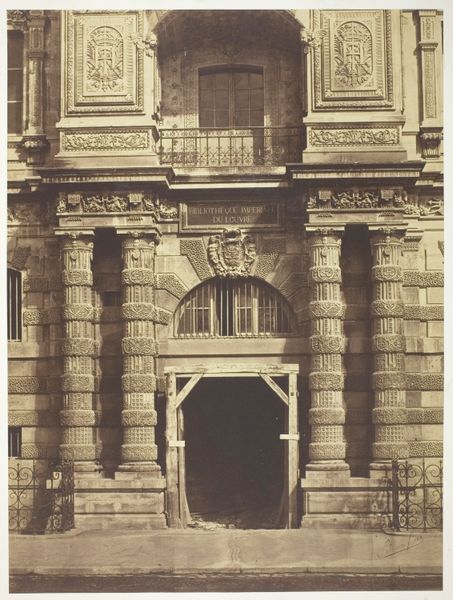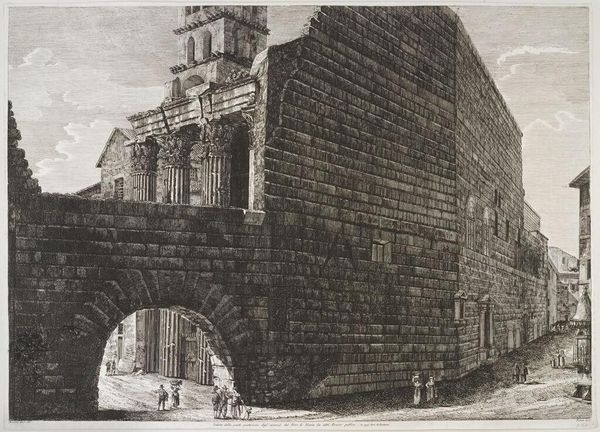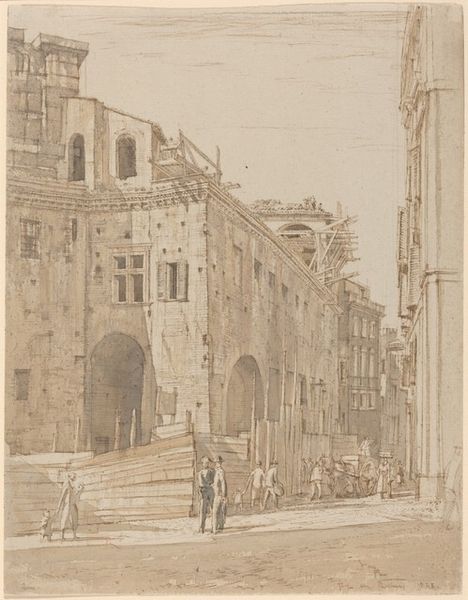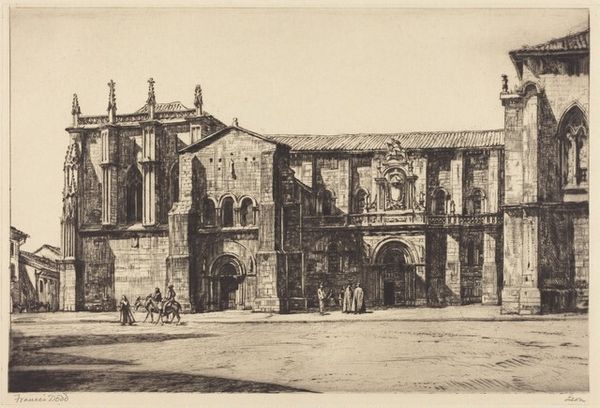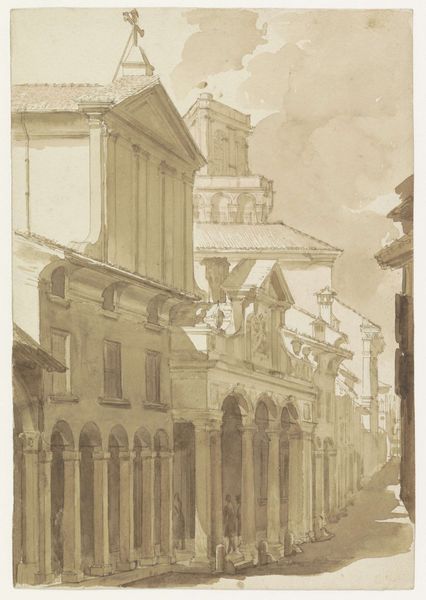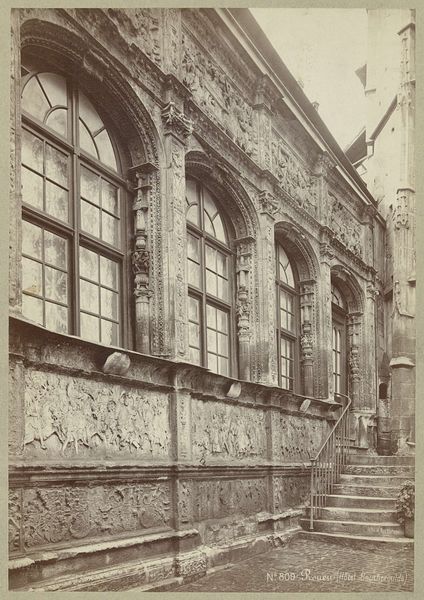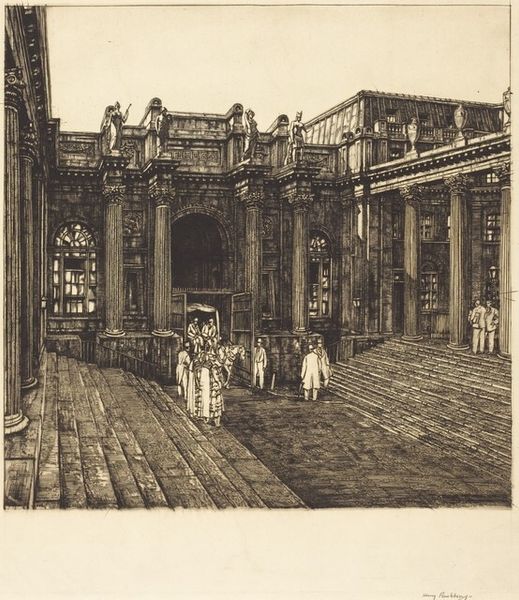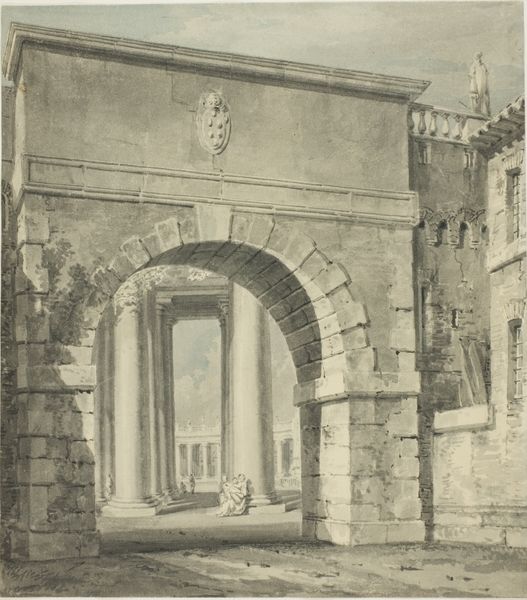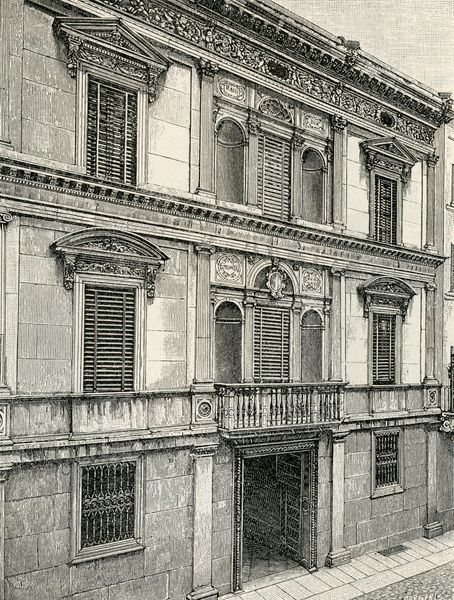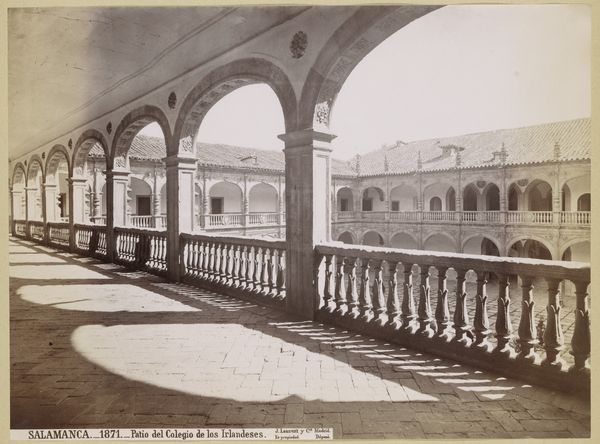
print, etching, architecture
# print
#
etching
#
landscape
#
historic architecture
#
architecture
#
realism
Copyright: National Gallery of Art: CC0 1.0
Curator: Looking at Muirhead Bone’s 1929 etching, Convent of San Payo, Santiago de Compostela, Spain, the first thing that strikes me is its somber elegance. What's your take, what feelings does it evoke in you? Editor: It feels… overwhelmingly solid. The scale and stark geometry give me a touch of claustrophobia, even though it's clearly an outdoor scene. The light helps. Curator: It’s interesting you mention that. Consider the architectural representation, particularly how Bone meticulously renders the stone facade and the play of light and shadow. It invites discussion about power, enclosure, and the historical role of religious institutions. How does that intersect, if at all, with what you call claustrophobia? Editor: It's probably less claustrophobia and more a feeling of being observed, even judged. Those tiny windows up top feel like watchful eyes surveying everything below. I wonder who was behind them, and what they were looking at? Curator: Your perspective makes me consider the absence of individual agency. Bone captures the imposing presence of the Convent, and its relation to individuals who appear tiny, almost insignificant against it, but aren't tiny at all, of course. Look closely at how their dress blends into the somber colors of the print, their very bodies seem subjugated by architecture. Editor: That’s true. The people at the bottom, lounging about; the single, cloaked figure. They look like they are acting in service to a film set in an old European town. But thinking of agency, even constrained agency is power, you know. These figures, in seeking and finding repose, might offer an angle to understanding the artwork from their perspectives too, their realities. Curator: You're right. How does the realism employed intersect with our contemporary understanding of urban space and identity? Are we simply observing an objective scene, or is Bone offering us a particular narrative, steeped in the complexities of history and societal dynamics? Editor: I am struck by the feeling that everyone in this image, in spite of its details, seems a part of the stones somehow. Do you feel that is Bone being critical of life in proximity of the church in Spain or celebratory of some type of national character? Curator: Possibly, though assigning strict intentionality can limit our understanding. This piece, beyond its aesthetic appeal, holds historical and political threads that, perhaps like Bone's etching style, are also embedded within larger, intricate webs of meaning, each open for continuous examination. Editor: I appreciate the reminder of the richness this architecture once housed, its residents and functions, as I appreciate Bone’s own rich style that now allows us a new viewing experience almost a hundred years on. Thanks for illuminating more context around Bone’s detailed artwork.
Comments
No comments
Be the first to comment and join the conversation on the ultimate creative platform.
